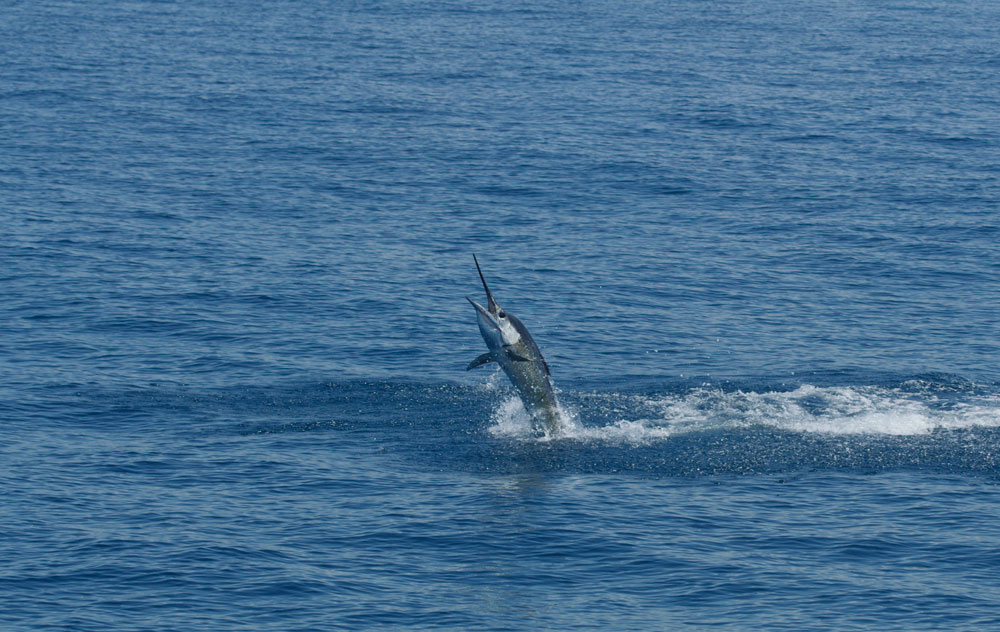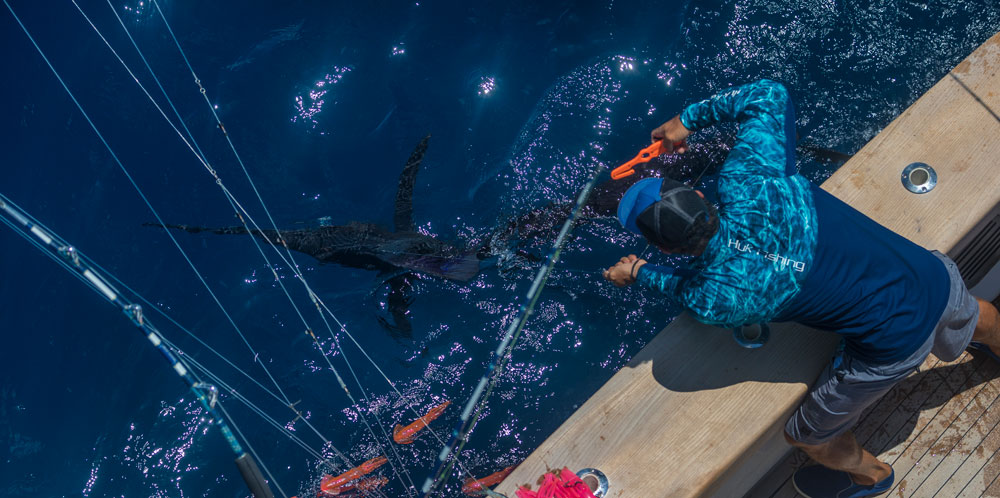If you have ever dreamed of landing a big game fish, they don’t get much bigger than billfish. Billfishing is one of the single most exciting challenges for an angler. To land one of these muscular, fighting apex predators, there are a few things you need to know. Here is our guide to the basics of billfishing.

What Is a Billfish?
The term billfish refers to a group of large predatory fish that have an elongated bill or sword-like beak. They can grow to over 13 feet long, weigh over 1,000 pounds, and are considered a prime game fish. Some common game fish found in the offshore waters of the United States include marlin, sailfish, swordfish, and spearfish.
Where to Catch Billfish
Billfish are migratory, continually moving in search of warmer waters to breed. However, there are a few places around the U.S. that represent some of the best billfishing destinations on the planet:
North Carolina
North Carolina has long been a hub for big game fishing. The Outer Banks hold some of the feistiest blue marlin, white marlin, and sailfish in the world.
Florida
Florida sits at the nexus of three of the greatest billfishing areas on the planet: the Caribbean, the Gulf of Mexico, and the Atlantic Ocean. Blue, white, and striped marlin all populate these waters, as well as sailfish, swordfish, and spearfish.
Maryland
There is a reason why the biggest billfishing tournament is held every year in Ocean City, Maryland. Every summer, the offshore waters teem with white marlin that migrate to the warm waters to spawn. You can also spot blue marlin, roundscale spearfish, and Atlantic sailfish during the warmer months.
If long-distance travel to one of these locations isn’t possible for you, there are plenty of apps to help you find the perfect hunting and fishing sites near you.
What Is the Best Season for Billfishing?
All species of billfish migrate to spawn and follow schools of baitfish up and down the offshore waters of the U.S. If you are fishing the Atlantic, the best time to head out billfishing is between July and September. By fall, the water begins to cool and the fish move south. Depending on your fishing location, you may still be able to spot a blue marlin or two through October and November.
For Florida anglers, the consistently warm waters and migratory patterns of the billfish mean that marlin and sailfish are plentiful well into the winter months. While it’s not quite the same fishing in cold weather, it does extend the billfishing season for avid fishermen.
Types of Bait and Lures for Billfishing

Baiting billfish is different than fishing for tarpon or bass. Rather than casting out and reeling in, billfishing uses a method known as trolling to lure the big game fish. Trolling simply means that you set up and bait multiple rigs at the back of your boat and let them trail along behind you, teasing the fish and luring them closer.
Another more recent invention that has quickly become popular with professional and amateur anglers is dredging. Dredging uses the same principles as trolling but plays into the natural way that billfish feed.
A dredger is an apparatus used to entice billfish up from the deep. It uses multiple troll lines rigged with 40-50 baitfish, which imitate a school of swimming fish. Dredges are highly effective, but you generally need a team of anglers to monitor and operate the system.
Billfish respond to dead and live bait; however, there are generally three distinct categories of bait that can successfully lure a billfish:
Live Bait
Billfish are predatory and react more aggressively to live bait. The key to live baiting is keeping your bait alive for as long as possible, so the vibrations from the panicking fish attract the billfish. Most professional anglers recommend small tuna, Spanish mullet, and squid to lure the biggest game.
Artificial Lures
Artificial lures offer a more durable baiting option. Lures enable you to troll at high speeds and can better attract the attention of an apex predator like a billfish. Newer lure models also move through the water in a more natural way. However, you need to choose a lure to suit the waters you are fishing and the species of billfish.
Rigged Natural Bait
An alternative to live bait is rigged natural bait. Though the bait is dead, the rig is set up to allow the bait to move through the water naturally. One popular option for rigged natural bait is the ballyhoo.
Tips and Tricks for Billfishing
Billfishing is an art form, but that doesn’t mean that you can’t increase your chances of a successful bite with a few tricks up your sleeve. Here are our top tips for landing a prize billfish:
The Bait-and-Switch Technique
Bait-and-switch is a tried-and-tested technique used by professional anglers. It uses hookless artificial lures to draw the billfish close to the line, and then hooked live bait is fed or pitched to fish to get them to bite.
The Perfect Trolling Speed for Blue Marlin
Your trolling speed is a key factor in ensuring that your bait and lures are running right. Staying at a consistent trolling speed can also improve your chances of a bite by making sure that you don’t outpace your billfish.
Dredge Fishing Tactics
It’s no secret that dredge fishing is the single best way to bring up big billfish. As the billfish comes up, it is easier for them to see a school of fish rather than a single baitfish, making it more likely that the billfish will bite.
Regulations Regarding Billfishing
As with most types of fishing, there are rules and regulations dictating the size and number of billfish that can be caught. In some states, including Georgia, billfishing is catch-and-release only, while other states prohibit certain fishing techniques.
For billfishing in offshore U.S. Atlantic waters, there is a maximum limit to how many billfish like marlin can be landed in a year. The maximum number of Blue Marlin, White Marlin, and Roundscale Spearfish that can be landed in a year is 250.
In addition to holding the correct license for your state, you must report any billfish you catch to the local authorities. check the rules and regulations for your state before you set out on your billfishing adventure.
Last Word
A successful billfishing trip depends largely on your level of preparation and can take a bit of trial and error to find the right technique. Brush up on the basics with our easy guide or check out more advice from our fishing professionals on the Mossy Oak website.




























